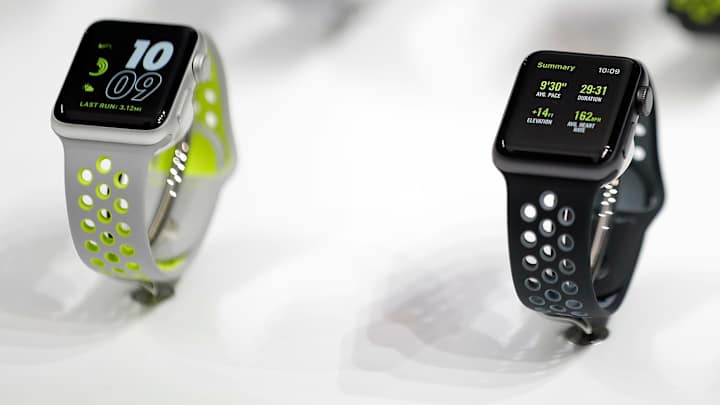How Under Armour and Nike have tackled wearable technology

Read about the latest sports tech news, innovations, ideas and products that impact players, fans and the sports industry at SportTechie.com.
In May 2006, Nike and Apple introduced the Nike+iPod Sport Kit, a wireless system that allowed Nike+ footwear to work seamlessly with iPods. At the time, it was a revolutionary advancement for connected sport and fitness.
Fast forward a decade and two of the world’s most iconic brands again shared the stage as they launched the Apple Watch Nike+ earlier this week. Even with the much-publicized announcement, though, it’s another decision by the Swoosh to distance itself from the wearable technology and hardware space, a niche that its biggest rival, Under Armour, has invested heavily in for the past three years.
While Nike is the undisputed leader in its category—with reported revenues topping $30 billion in 2015—Under Armour has consistently chipped away at Nike’s position, announcing a 25th consecutive quarter of more than 20% revenue growth in July.
So how do Nike’s Apple products compare to Under Armour’s tech?

Subscribe to the
SportTechie Newsletter
- Apple Watch Nike+ looks perfect for runners
- Amazon Prime delivies to tailgates?
- How Broncos fans can get free Budweiser
In Feb. 2012, Nike released the then highly acclaimed FuelBand,”the company’s first move to wearable technology. The highly charged pedometer was an industry game-changer as it tracked distance, speed, heart rate and other health metrics. Yet two versions and three years later, Nike dialed back its FuelBand operation while still continuing to manufacture the Nike+ FuelBand SE, the second version, which came with added Bluetooth technology and an improved battery life.
Unfortunately, much of the accompanying Digital Sport hardware team—about 70% to 80%—were laid off by the company in April 2014, CNET.com reported.
Jim Duffy, a Nike analyst with Stifel, Nicolaus and Company, commented to CNET that the move might actually make sense from a strategic standpoint with Apple. With the new announcement this week, we are seeing Duffy’s prediction becoming a reality.
“Apple is in the hardware business,” he told CNET.com at the time. “Nike is in the sneaker business. I don’t think Apple sees Nike as competitive. It’s likely that an Apple hardware offering would be supportive of the Nike software. Nike would be content to let Apple sell devices, as long as they would be supportive of the apps.”
There has been a steady investment by Nike in its software and applications ever since, including launching its new Nike+ app in August and updating its new Nike+ Run Club app.
Yet, on the other end of the spectrum, since late 2013, Under Armour CEO Kevin Plank has bet big on connected sport and fitness and wearable technology, even with it accounting for just 1.3% of overall comapny revenues in 2015.
“We started this (Connected Fitness) journey, like, years ago, but it really began when we started acquiring things in what we call our ‘Connected Fitness’ health system, with an acquisition called ‘MapMyFitness’ in December of 2013—20 million registered users,” Plank told FoxBusiness.com earlier this year. “Our bet was on the community, not the equipment. Here we are now, two years later, more than 160 million registered users that we have in this ecosystem, giving us information, telling us what they ate, telling us whether they worked out.”
Under Armour has spent more than $700 million on fitness applications and other activity-tracking technology like the previously mentioned MapMyFitness, a training app that allows consumers to record and share exercise routines, among other options. MyFitnessPal, which the company acquired last February for $475 million, operates as a nutrition tracker and the European-focused and personal training app, Endomondo, was acquired around the same time period; it added another 20 million users to the company.
In January, Under Armour also bundled together a few different wearable technology devices—including a heart-rate strap, fitness tracker and smart scale—into its $400 HealthBox.
“One thing we emphatically know is that the more they work out, the more apparel and footwear they’re going to ultimately buy,” Plank told The Wall Street Journal, adding that the data gathered through the various technologies and applications will remain a huge component of marketing decisions.
Still, it remains to be seen whether or not wearables will be a bigger driver of sales for the challenger brand moving forward. As it stands now, Nike is not concerned about a relatively small piece of the fitness pie, even if it is a clear focal point for Under Armour heading into 2017. How Nike’s latest partnership with Apple affects Under Armour’s wearable sales, if any, will be an intriguing storyline to follow over the next year.
